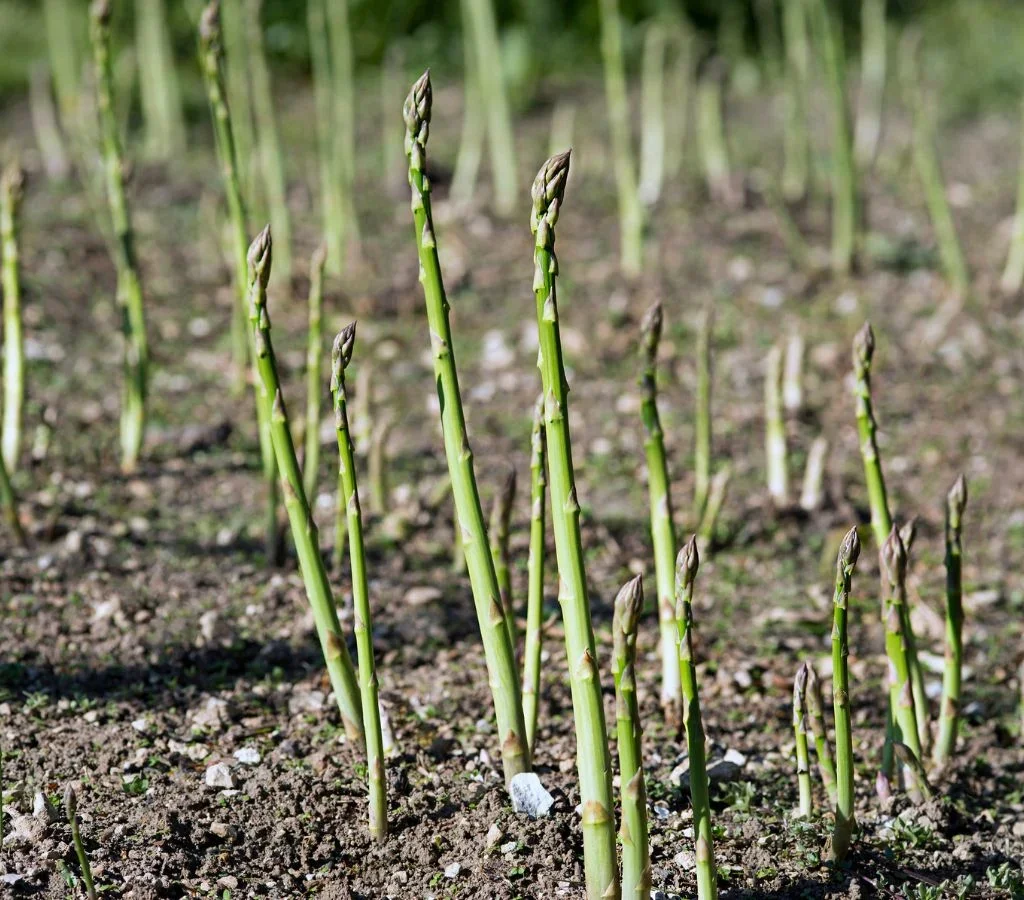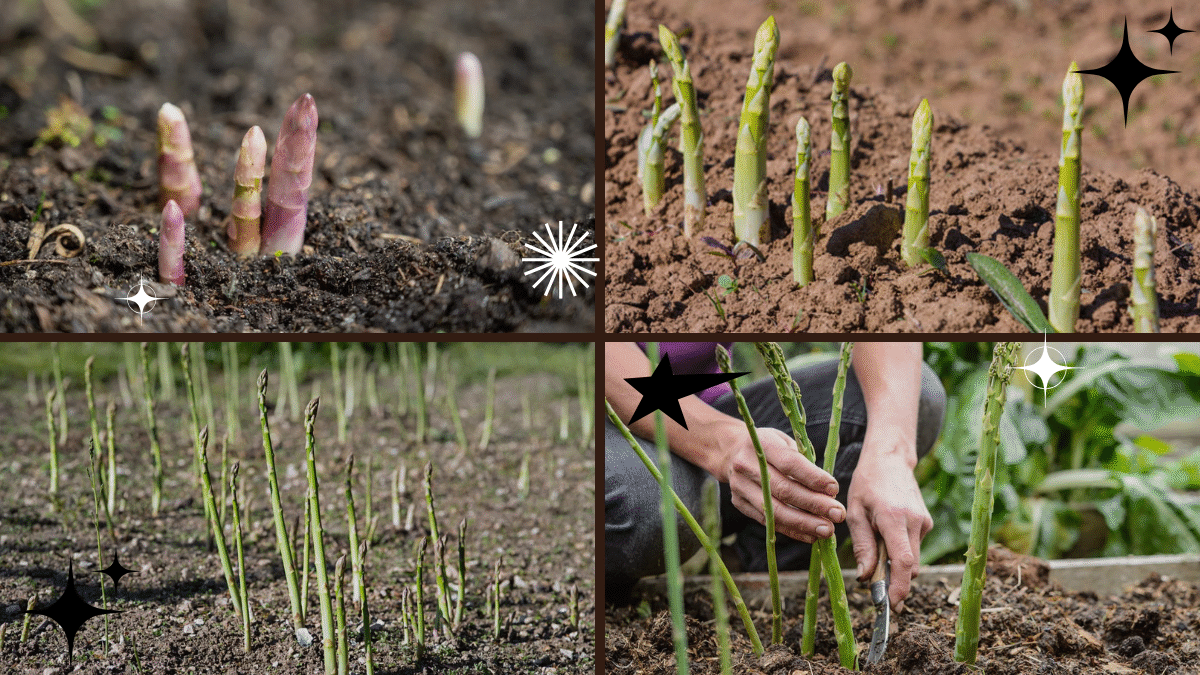Asparagus is one of the first signs of spring for many gardeners and food lovers alike. This perennial vegetable not only delivers a delicious, tender harvest but also rewards your garden year after year with minimal maintenance once established. While it takes patience to grow asparagus — typically 2-3 years before your first significant harvest — the long-term payoff is well worth it.
If you’ve ever dreamed of growing your own asparagus patch, this detailed guide will walk you through everything you need to know, from selecting varieties and planting methods to long-term care and harvesting tips.

Why Grow Asparagus at Home?
Asparagus isn’t just tasty; it’s a nutritional powerhouse rich in fiber, folate, and vitamins A, C, E, and K. Growing it at home ensures a fresh, chemical-free supply and adds a touch of rustic elegance to your garden with its tall, feathery fronds.
Plus, a well-maintained asparagus bed can remain productive for 15–20 years, making it one of the most rewarding vegetables to grow for patient gardeners.
Choosing the Best Asparagus Varieties
Before planting, you’ll need to select the variety that suits your region and taste preference. Some of the most popular types include:
- Mary Washington: An heirloom variety known for its excellent flavor and cold tolerance.
- Jersey Knight: A modern, disease-resistant hybrid that produces thick, tender spears.
- Purple Passion: A unique, deep-purple variety with a slightly sweeter taste and tender texture.
- UC 157: Ideal for warmer climates and widely grown in commercial operations.
Tip: Opt for male-dominant hybrids like the Jersey series for higher yields and fewer berries (which means less volunteer seedlings to manage).

When and Where to Plant Asparagus
Asparagus thrives in full sun and well-drained, fertile soil with a neutral pH (around 6.5–7.5). The key to a successful asparagus bed is good site preparation since these plants will occupy the same spot for decades.
Ideal planting time:
- Early spring, as soon as the soil can be worked.
Site requirements:
- At least 6–8 hours of sunlight per day.
- Deep, loose, fertile soil that drains well.
- A permanent spot away from invasive tree roots and frequently tilled areas.
Preparing the Soil for Planting
Since asparagus is a long-lived perennial, investing time in soil preparation pays off in healthier, more productive plants.
Steps:
- Clear the area of weeds, rocks, and debris.
- Dig a trench about 12–18 inches wide and 8–12 inches deep.
- Mix in plenty of organic matter like compost, well-rotted manure, or leaf mold.
- Add a balanced organic fertilizer or bone meal for phosphorus to encourage strong root development.
Tip: Raised beds work well for asparagus, especially in areas with heavy or poorly draining soil.

How to Plant Asparagus
Asparagus is typically grown from crowns (1-year-old roots), which are more reliable and faster to establish than starting from seed.
Planting Steps:
- Create a mound of soil at the bottom of your trench.
- Place each asparagus crown on top of the mound, spreading out the roots.
- Space crowns about 12–18 inches apart.
- Cover with 2–3 inches of soil and water well.
- As the shoots grow, gradually fill in the trench with soil until level with the surrounding ground.
Note: Avoid harvesting in the first year to allow plants to establish a strong root system.
Watering and Mulching
Asparagus requires consistent moisture during its growing season but does not tolerate waterlogged soil.
- Water deeply once or twice a week during dry periods.
- Apply a 2–3 inch layer of mulch (straw, wood chips, or compost) to conserve moisture, suppress weeds, and regulate soil temperature.
Fertilizing Your Asparagus Bed
Feed your asparagus bed annually to maintain soil fertility and encourage a robust harvest.
- In early spring: Apply a balanced fertilizer (10-10-10) or a generous layer of compost before spears emerge.
- After harvest season: Feed again to support healthy frond growth, which builds energy for next year’s crop.

Asparagus Care Through the Seasons
Spring:
- Remove mulch in early spring to allow the soil to warm.
- Watch for spears to emerge and keep soil evenly moist.
- Start gradual trench-filling if not completed during planting.
Summer:
- After harvest (in years 3+), allow the ferns to grow tall.
- Stake plants if necessary to prevent lodging (falling over).
- Weed regularly to reduce competition.
Fall:
- Cut down browned, dead ferns after the first frost.
- Remove plant debris to prevent overwintering pests and diseases.
Winter:
- Add a fresh layer of mulch or compost to insulate crowns and enrich the soil.
Common Asparagus Pests and Diseases
While generally hardy, asparagus can occasionally suffer from:
- Asparagus beetles: Small beetles that chew on spears and ferns.
- Control by handpicking or using insecticidal soap.
- Fusarium rot: A soil-borne fungal disease causing yellowed ferns and weak spears.
- Prevent with good drainage, crop rotation, and disease-resistant varieties.
- Rust: A fungal disease causing orange spots on ferns.
- Control with proper spacing for airflow and remove affected foliage.
Harvesting Asparagus
Patience is key with asparagus. Avoid harvesting in the first two years to allow crowns to establish fully.
Harvest timeline:
- Year 1–2: No harvesting.
- Year 3: Harvest spears for 2–4 weeks once they reach 6–8 inches tall.
- Year 4+: Extend the harvest season to 6–8 weeks.
Harvest tips:
- Use a sharp knife or snap spears off at ground level.
- Pick every 1–3 days during peak season for best tenderness and quality.
- Discontinue harvesting when spear size decreases to thinner than a pencil.
How to Store and Enjoy Fresh Asparagus
After harvesting, fresh asparagus can lose its quality quickly.
Storage tips:
- Place spears upright in a jar with an inch of water.
- Cover loosely with a plastic bag and refrigerate.
- Use within 3–5 days for best flavor and texture.
Culinary ideas:
- Steam, grill, roast, or sauté for a variety of delicious dishes.
- Add to frittatas, stir-fries, pasta, or serve simply with olive oil and lemon.
Final Thoughts
Growing asparagus may require a bit more patience and preparation than some garden vegetables, but the rewards are substantial. A well-tended asparagus bed can feed your family for decades with sweet, tender spears every spring.
By selecting the right variety, preparing the soil carefully, and following proper planting and care practices, you’ll be well on your way to cultivating your own delicious harvest.
Whether you’re a novice gardener or an experienced grower looking to expand your perennial crops, asparagus is a fantastic addition to any home garden.





Leave A Comment